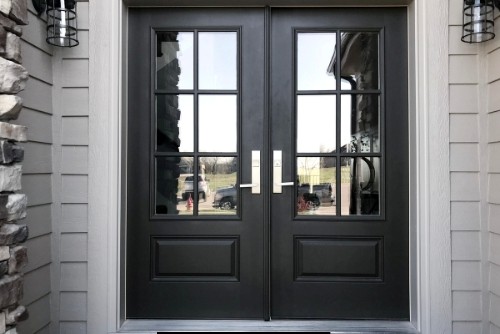Key Takeaways
- Understand the different types of rugs available and their best uses.
- Learn how to measure your space for the right rug size.
- Discover tips for selecting rug colors and patterns to complement your decor.
- Get insights on maintaining and caring for your rug to extend its lifespan.
Table of Contents
- Types of Rugs
- Measuring Your Space
- Color and Pattern Selection
- Placement Tips
- Rug Care and Maintenance
Types of Rugs
Choosing the right rug starts with understanding the various types available. Rugs come in many shapes, sizes, materials, and weaves, serving different functions and aesthetics. Traditional Persian and Oriental rugs are known for their intricate designs and durable construction, making them ideal for high-traffic areas. On the other hand, modern rugs offer sleek and contemporary designs that can complement minimalist or modern decor styles. Shag rugs bring a touch of retro with their fluffy, high-pile texture that creates a cozy atmosphere. These are just a few examples; each type has unique characteristics and suitable settings.
According to a study by Architectural Digest, the rug’s material significantly impacts its durability and placement. Natural fibers such as wool and cotton are known for their durability and softness, making them great for living areas and bedrooms. Synthetic materials like nylon and polyester offer stain resistance and are often more budget-friendly, which can be ideal for families with kids or pets.
Measuring Your Space
To ensure your rug fits perfectly, measuring your space accurately is crucial. Incorrectly sized rugs can disrupt the harmony of a room’s layout. Start by delineating the area where the carpet will be placed. For living rooms, the standard approach is to put the rug under the front legs of your sofa and chairs, which helps unify the seating area. Ensure you leave enough space between the edges of the carpet and the walls to create a framed look. Standard dimensions for living rooms often range from 5×8 feet for smaller seating areas to 9×12 feet for larger spaces. Additionally, washable rugs are trendy for their ease of maintenance and flexibility in different home environments. In dining rooms, it’s essential that all chairs comfortably sit on the rug, even when pulled out. This usually means adding at least 24 inches to each side of your dining table dimensions. Bedrooms also benefit from well-sized rugs. A popular choice is placing a carpet under the lower two-thirds of the bed, extending beyond the bed’s sides and foot, providing a soft surface for your feet when you rise each morning.
Color and Pattern Selection
Rug color and pattern play a significant role in setting the tone of a room. The choice of color can affect the room’s perceived size and mood. Lighter colors like beige, ivory, and pastels make a space feel larger and airier, while darker shades like navy, charcoal, and burgundy add a sense of coziness and intimacy. When selecting patterns, it’s essential to balance them with your existing decor so the room doesn’t feel overwhelmed. Patterns can range from geometric shapes to floral designs, and each can convey different styles and atmospheres. According to Home Design Lover, it’s best to consider the size of the patterns relative to the room size to avoid overwhelming the space. For instance, large, bold patterns work well in larger areas, whereas smaller, intricate patterns are suitable for cozy, intimate spaces.
Additionally, a solid or subtle patterned rug can add perfect balance if your furniture and walls are already heavily patterned. A well-chosen rug can also serve as a focal point or a complementary piece, enhancing the room’s overall aesthetic. Remember, the goal is to create harmony between the rug and the rest of the decor, ensuring that it enhances rather than competes with other elements.
Placement Tips
Proper rug placement can enhance the room’s layout and functionality. In living rooms, placing the rug under the front legs of furniture pieces can unify the seating area. All chairs should comfortably sit on the rug to prevent unevenness in dining rooms. In bedrooms, placing a carpet under the lower two-thirds of the bed can add warmth and comfort. Each placement strategy should aim to anchor the room’s elements, providing a base for the room’s visual balance and coherence. For instance, in open-concept spaces, rugs can define areas without physical barriers, distinguishing a dining space from a living area. Hallway runners can add warmth and guide movement while enhancing the length perception of the corridor. In bathrooms, a small, plush rug can add a touch of luxury and comfort, especially in front of a sink or tub. Outdoor spaces can also benefit from rugs made from weather-resistant materials, creating an extension of the indoor living area. Additionally, layering rugs can add texture and interest to a space, providing a versatile way to update your decor seasonally. Proper rug placement enhances the room’s aesthetic appeal and contributes to a more functional and comfortable living environment.
Rug Care and Maintenance
Maintaining your rug ensures it remains vibrant and lasts longer. Different materials and weaves require different care routines, but some general tips can be applied. For starters, regular vacuuming is essential to remove dirt and debris. Be sure to use a vacuum without a beater bar to prevent damage to delicate fibers. Spot cleaning spills promptly will help maintain the rug’s integrity; blot the spill with a clean cloth and avoid rubbing, which can spread the stain.
Rotating the rug every 6-12 months ensures even wear and prevents fading from sunlight. Professional services can effectively remove embedded dirt and refresh the fibers for deeper cleaning. For washable rugs, follow manufacturer instructions for machine washing, ensuring they are dried thoroughly to prevent mold and mildew. Utilizing these steps will help preserve the beauty and functionality of your rug for years to come, maintaining its role as a central and appealing component of your home decor.




